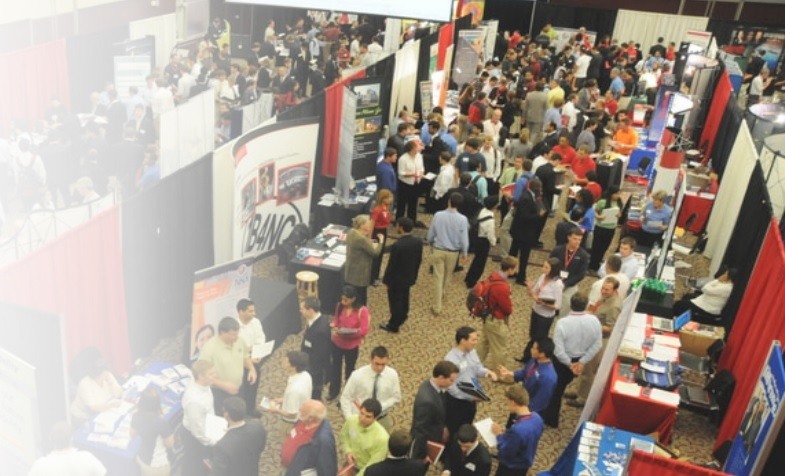Candidates: Are you interviewing and need support?
Did you know the domain of a candidate’s email address (Gmail, Yahoo, AOL, etc) has more relevance to job performance¹ than where they went to school?
The best graduate talent can come from anywhere.
In this guide, we’ll look at why the highest potential students turn down job offers and show you you how to hire them before your competition.
Why Do Students Turn Down Job Offers?
When it comes to graduates with highly specialized, in-demand skillsets, you need to move fast. Everyone is trying to recruit their next top performer.
While you can impress them with an experience they appreciate, you also need to move them quickly through your hiring funnel. Delays in receiving a job offer are the #1 reason they get turned down.
In other words, they already accepted another job offer.
To move quickly, you need to identify future top performers at the beginning of the process, not the end. If you’re using the final interview stage to determine a graduate’s potential, you’re moving too slow. Use the final stages of interviewing to identify each candidate’s fit.
Today’s Grads Expect More

Traditionally organizations meet students for the first time on campus - through career fairs, networking events, and the like. The career fair is a way to “see” beyond each student’s resume, since at that point they all look the same on paper.
In 2018, if you’re using the career fair to meet students for the first time, you’re behind. Today’s innovative companies aren’t just meeting students on campus - they’re making offers there.
The process that worked before - sending recruiters to campus, meeting students, interviewing the best, and directing the most promising to your online application - is not enough. It cannot scale beyond a limited number of schools and does not engage students where they are.
In this guide, you’ll learn how to hire on campus, while the competition is still conducting pre-screens. We’ve broken it down into four steps:
- Give Students the Information they Want.
- Assess Skills at the Beginning of the Hiring Process.
- Ace the Career Fair.
- Deploy Unique Hiring Approaches.
Step 1: Give Students the Information they Want
 Your college recruiting strategy starts before graduates even apply. They want to know how they’ll be treated on the job. They want to know what your organization expects from them.
Your college recruiting strategy starts before graduates even apply. They want to know how they’ll be treated on the job. They want to know what your organization expects from them.
These are four proven ways to give students the information they want, so they apply to your roles before the career fair:
1) Help on Social Media
If they reach out for application help on social media, respond in a timely manner. 43% of students said that personal contact influenced their decision to attend a college.
2) Video Previews
These could be online or at physical locations. Take students through “a day in the life” simulations that show exactly what it is like to work at your organization. Bring your workplace to life with interactive web content, on-campus demonstrations, and stories from your current employees.
3) Personal Employee Stories
Feature stories of success and advancement by students’ recently graduated peers. Encourage your top performing hires from years past to write blog posts, film videos, and create other content that puts your jobs and opportunities for growth on full display.
4) Make Job Descriptions Meaningful
Don’t make your job descriptions a list of demands. Use them as an opportunity to show off the big, impactful projects your new hires can expect to tackle.
Step 2: Assess Specific Skills at the Beginning of the Hiring Process
Interviews are your most powerful screening step. You just traditionally haven't been able to make them scale.

Candidates Want the Chance to Interview
According to a recent survey by iCIMS, 90% of this last year’s graduates felt confident in their interview-taking skills. When confronted with application after application, graduates feel that they are not given a fair shake - particularly when many entry-level positions demand 2+ years experience.
Recent graduates all look the same on paper. You need to give them the chance to differentiate themselves. Academic pedigree is not a good indicator of job success. Nor is GPA.
HireVue gives every candidate who takes a video interview the opportunity to provide their feedback. Of the 1.5 million candidates who have completed this survey, the feedback has been overwhelmingly positive:
- 80% enjoyed the experience and appreciated the opportunity to differentiate themselves;
- 68% rated the experience 9 or 10 out of 10;
- 85% thought it reflected well on the employer’s brand;
- 89% said it respected their time.
That’s why we’re using on-demand video interviews to identify the traits that matter before you get to campus. The three ways you can go about this are:
1) Use On-Demand Video Interviews to Evaluate Soft Skills
Hiring managers consistently list skills like “communication,” “organization,” and “critical thinking” as among the most important job-related skills. When you invite graduates to a HireVue OnDemand, you don’t just give them an application experience they want. You gain insight into those high potential soft-skills from the beginning of the hiring process.
2) Combine the Interview and Assessment
You don’t want the best early professional talent walking away because they were fed up with the 60+ repetitive questions of a pre-hire assessment. HireVue Assessments provide a validated prediction of job performance by evaluating recorded video interviews with artificial intelligence (AI). You effectively assess and interview your candidates in a single, easy step.
3) Evaluate Technical Candidates with Coding Challenges + Video Interviewing
Most recruiting functions start the screening process with a technical recruiter-led phone screen, followed by a coding challenge and several rounds of interviews. By combining an automatically scored coding challenge with a recorded video interview, even non-technical recruiters can identify high potential, technical students from the get-go.
Since you’ve identified the highest potential students before the career fair, you can use your time on campus in a fundamentally different way: closing top talent.
Step 3: Ace the Career Fair
 Most of the hiring process is done online, but the career fair is still integral in college recruiting. Career fairs remain a great way to introduce future top performers to your brand. The impact you make on them could have far-reaching effects when it comes time for them to find a new role.
Most of the hiring process is done online, but the career fair is still integral in college recruiting. Career fairs remain a great way to introduce future top performers to your brand. The impact you make on them could have far-reaching effects when it comes time for them to find a new role.
Close Ahead of the Competition
This is key. If you’ve followed the previous steps, you should have a good idea of who you want to hire by the time you arrive on campus.
When you see students ahead of time via video interviews, you can use the career fair to meet them in person and close them while your competition meets them for the first time.
You should also:
1) Make it a Branding Opportunity
On-campus recruitment events shouldn’t just be about hiring: they’re a great way to improve your reputation among a notoriously difficult to reach demographic. While college students may not be decision-makers now, they will be in the future - so make a great impression by turning your campus event into a branding play.
2) Use Interview Speed Dating
“Speed dating” is a form of rapid-fire round-robin interviewing, where each candidate spends only 5-7 minutes with each recruiter and hiring manager. This is a great way to get multiple pairs of eyes on a promising candidate, as well as the perfect setup for students with hectic schedules.
3) Work with Relevant Clubs to Publicize Your Presence
Notifying student organizations is an easy way to get the most out of your on-campus recruitment spend. A simple email from a recruiter to a student leader can go a long way toward driving the attendance of your target student demographic. Most will jump on the chance to build a relationship with a potential employer.
Step 4: Deploy Unique Hiring Approaches
Once you’ve built a proven recruiting process that casts a wide net and identifies top talent quickly, it’s time to implement some unique approaches.

These four provide a significant competitive advantage, so long as the rest of the process is ironed-out:
1) The Buddy System
Top performers are friends with other top performers. Implement programs that let new hires recruit their friends. This doesn’t just make your job easier - they want to do it! This approach works especially well for internships.
2) Develop Events with On-Campus Groups
Most high demand skill sets will have some sort of on-campus group (think a nursing student association or Programming Club). Participants in these clubs want to know their time spent on extracurricular activities was not a waste. Connect with each student-run organization’s leadership to create high-impact events.
3) Nurture Candidates
Between extracurricular activities and final exams, college students are busy. Don’t blame them if they forget to follow up; use technology to educate and nurture them. New grads appreciate text message updates during the interview period.
4) Use the Latest Tech
Virtual Reality (VR) and 360-degree video are on the rise. Providing candidates with a VR experience - like an immersive view of your office space - is a great way to get candidates engaged with your brand. These technologies aren’t just new to most Americans (imagine if you provided a candidate their first VR experience!), they also help candidates envision themselves in your work environment.
Learn how companies identify top talent before recruiters even get to campus. Get the full guide here.
1) HireVue Data Science Team, 2016.





